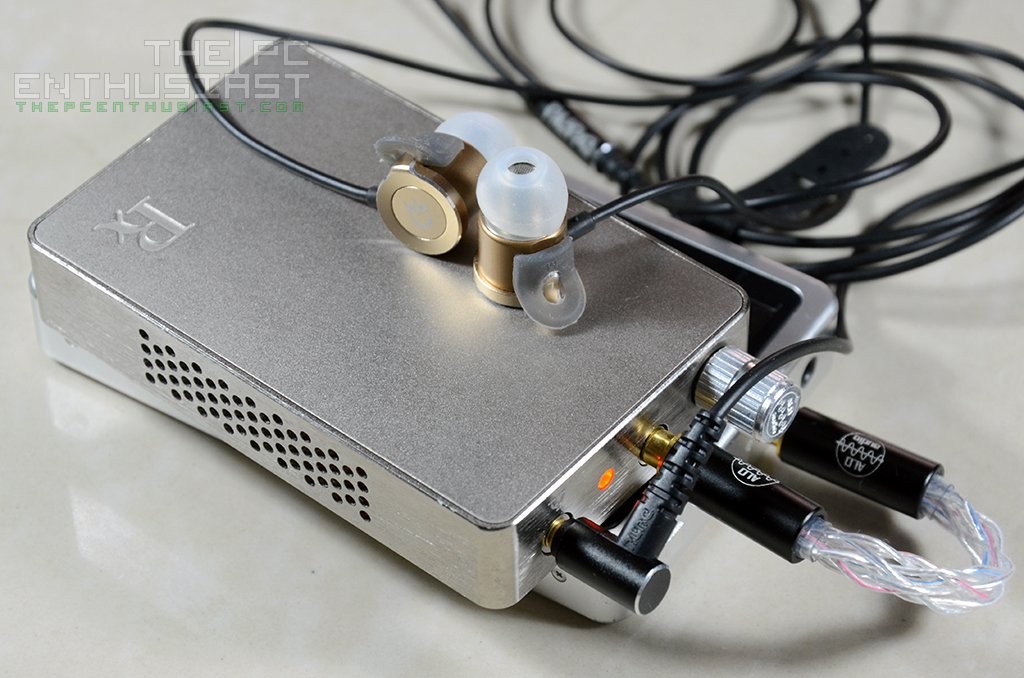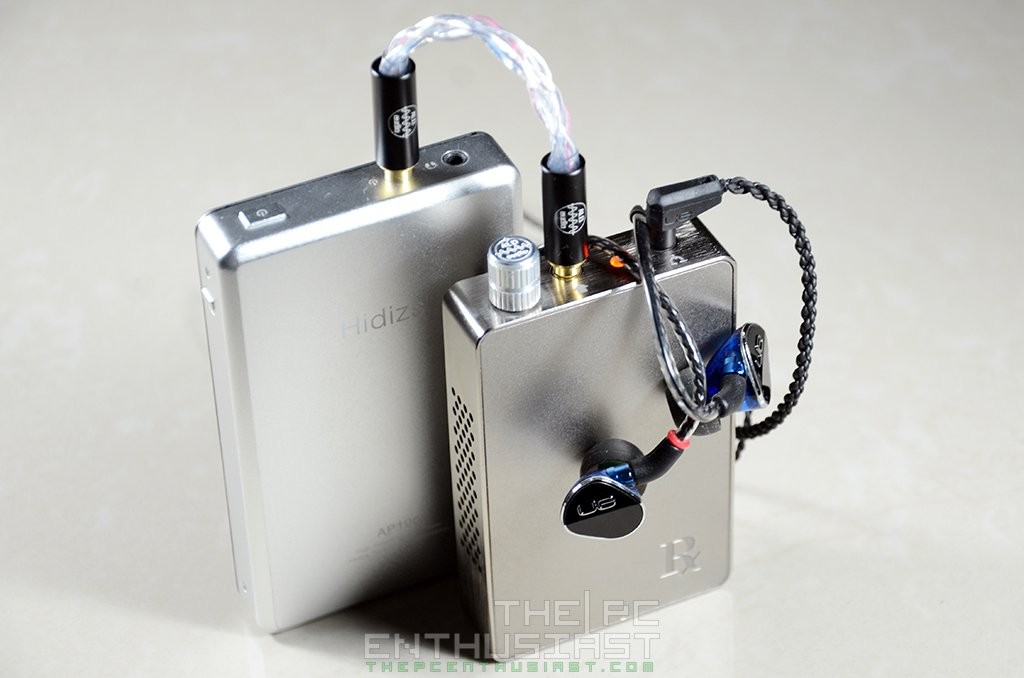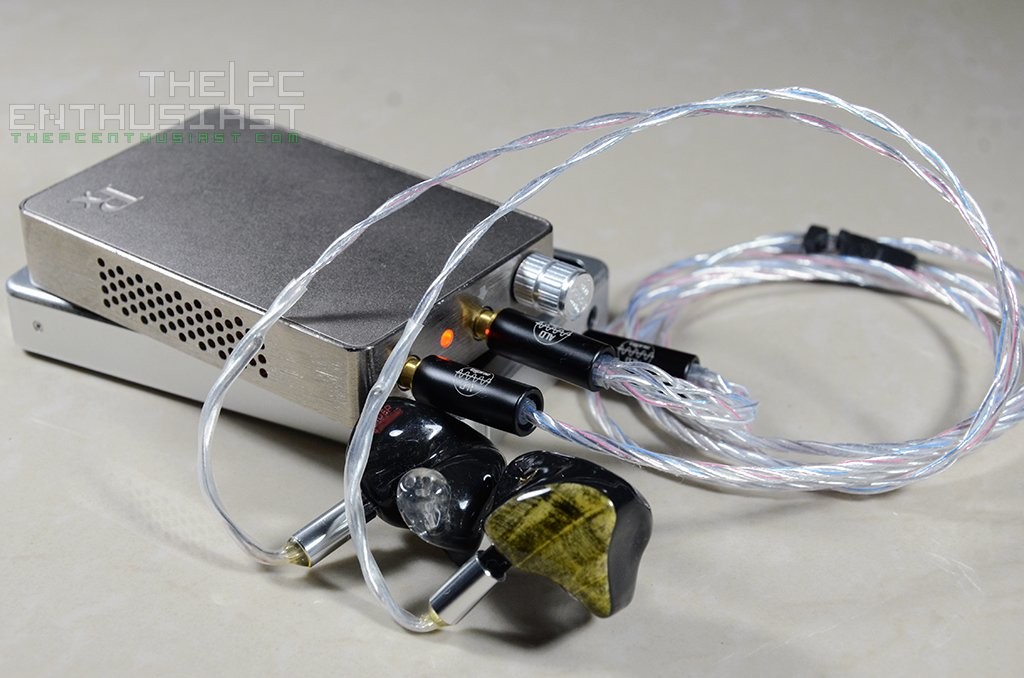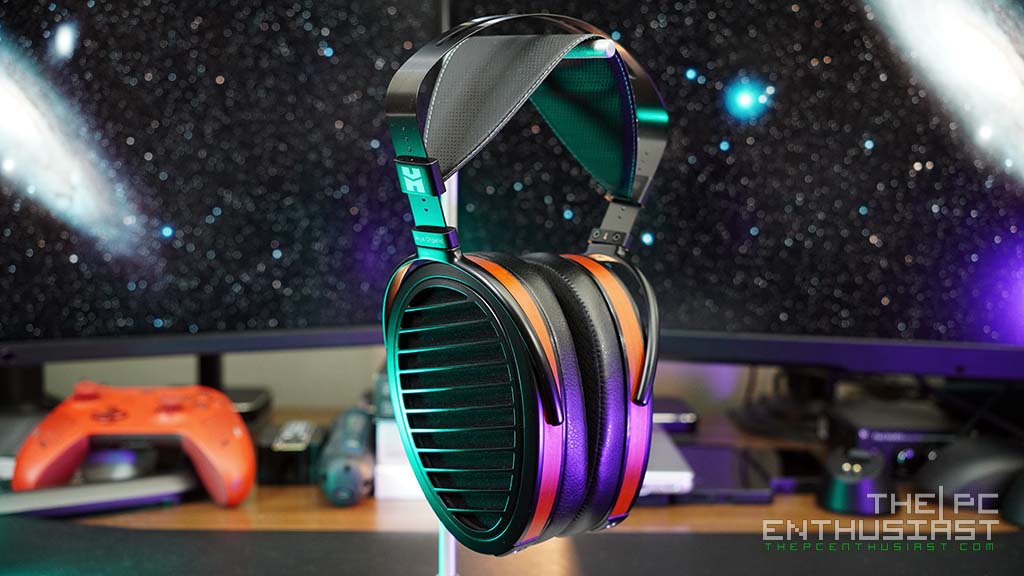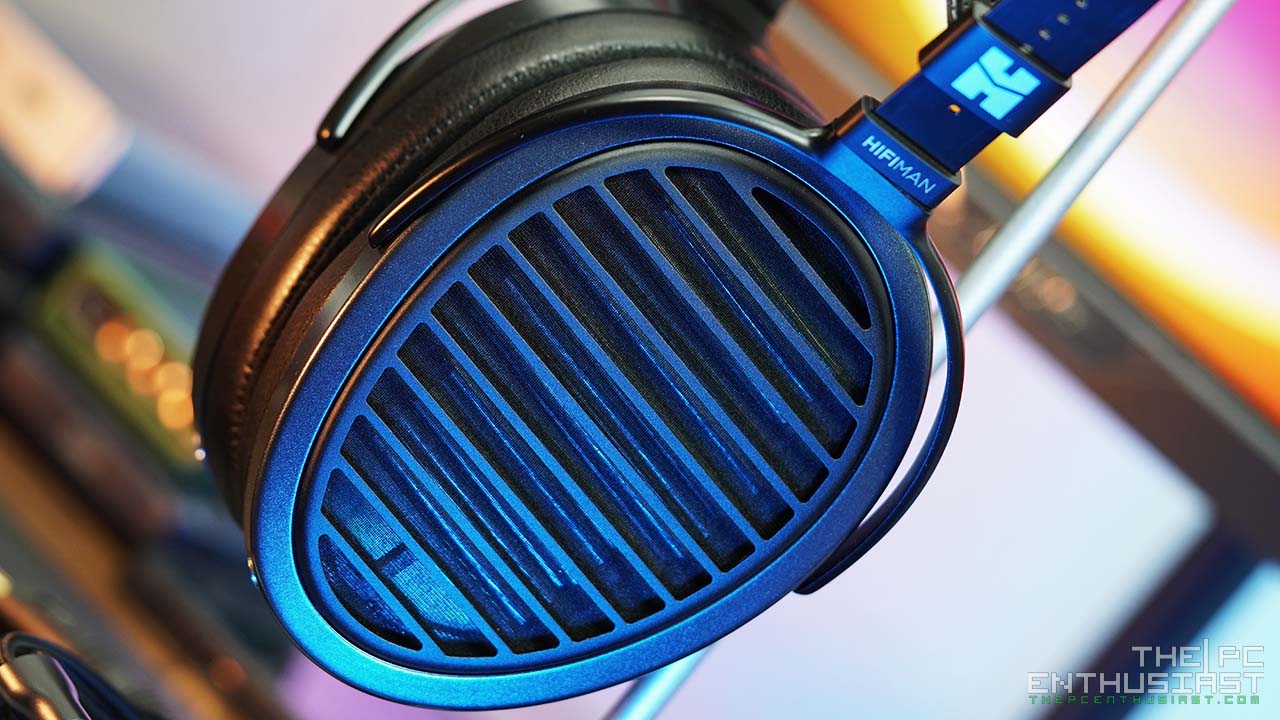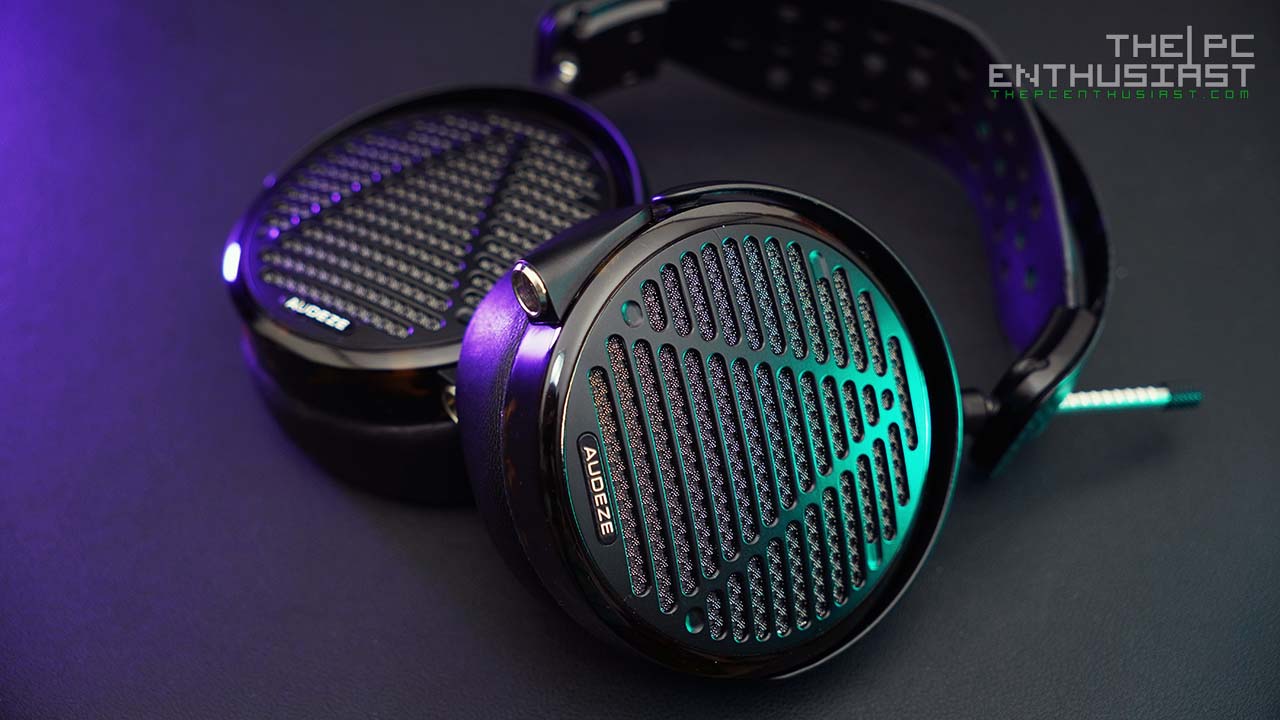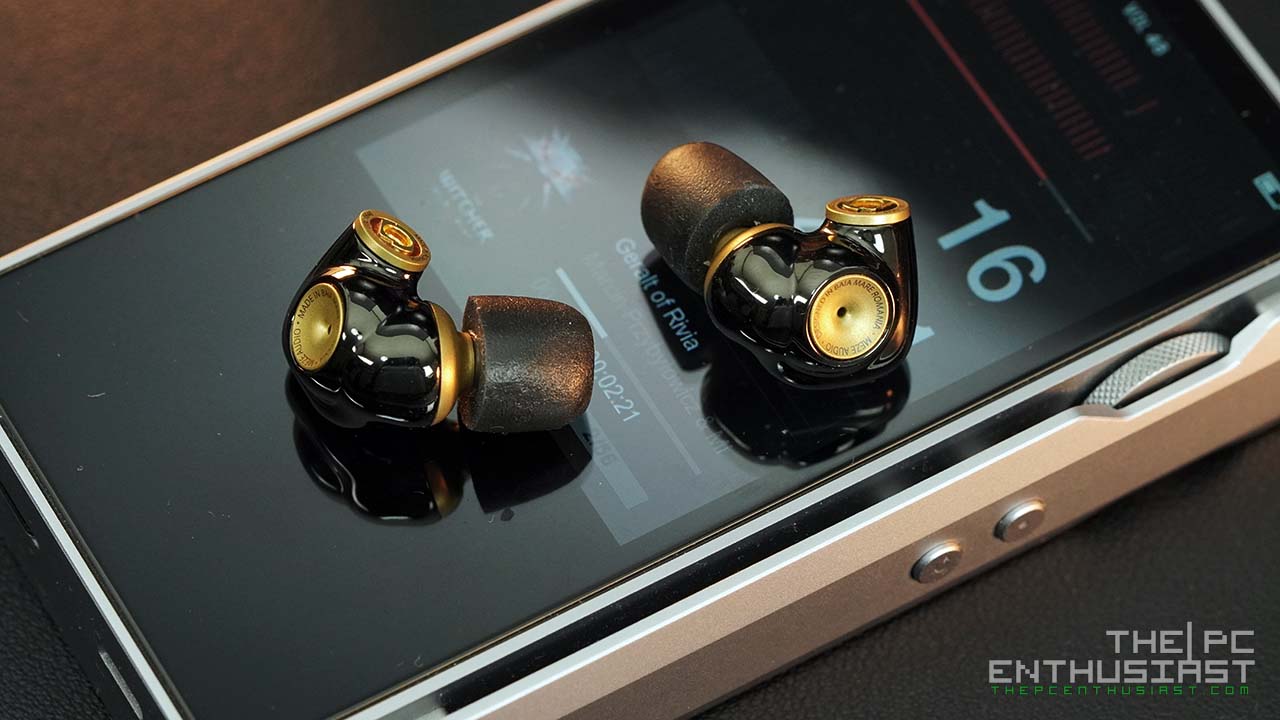Testing and Sound Quality
Currently, I only have one DAP to test the Alo Audio Rx with, and that’s the Hidizs AP100. I am expecting more DAPs to come in the following months, so I might revisit this article if ever there are changes that are worth mentioning. I tested the Rx with the DUNU DN-2000, UE 900s, Heir Audio 3.A S and Heir Audio 8.A custom IEMs. I’m using Alo Audio’s SXC 8 mini to mini interconnect to connect the AP100 and the Rx. Finally, I’m also using Alo Audio’s SXC 24 with the 3.A S and 8.A.
One thing that I really like about the Alo Audio Rx is that it’s a really (dead) silent IEM amplifier. No hissing can be heard in between tracks, on pauses or silent section of the music. Of course, this was my experience based on the IEMs that I currently have when I tested the Rx. Generally, I find the Rx to be neither on the warm side nor on the bright side. When I first used it, I actually didn’t hear any difference or changes in the sound signature of the IEM I used. The Heir Audio 8.A still sounds warms, while the DN-2000 still has that sparkle into it. I think the Rx is generally neutral sounding amplifier.
The high section is not rolled off, rather they are extended enough to give my IEMs some sparkle, clarity and detail. It didn’t make any of my IEMs harsh or bright and definitely not sibilant. There is also a good amount of air in the high and mid section. The music sounds natural and not compressed. However, if you have an IEM that is bright and you might want to tone it down a little bit, I don’t think that the Rx can do that for you.
For me, the mid section of the Rx is definitely fantastic. The artist’s voice sounds more energetic and engaging, yet they are smooth and very pleasing to my ears. When I reviewed the UE 900s, the mid section was good, but after listening to several different IEMs later, I realized that its mid section might have some room for improvement. This is what exactly the Rx did to my UE 900s.
The Alo Audio Rx will not add more bass to your IEM, neither make the bass less present. But I noticed that bass was fast and tighter and it sounds like the bass section is fuller. My Heir Audio 8.A is a warm IEM. There are a lot of things going around with the 8 drivers inside and all of them sound very coherent and the synergy is very good. With the Rx, the bass was smooth, fun to listen with, and was never boomy and it didn’t make my IEMs sound thunderous.
I think the Rx may leave the bass lovers wanting a little bit more. But if your IEM already has a good amount of bass to satisfy your ears, the Rx will simply improve the bass section by making it tighter and faster. Don’t expect that your IEMs bass will be extended further down because that will not happen at all. If bass is all that matters to you, I would suggest finding a warm (DAC with) amplifier instead.
Sound staging is pretty good as well with the Rx. Instruments are well separated with a good amount of distance, and they don’t sound cluttered into one space. I had a very good time with the Rx, and was able to listen with my music for several hours. It didn’t feel fatiguing nor hot on my ears, instead it was smooth and musical overall.
Basically, the Alo Audio Rx is optimized for IEMs, but it doesn’t mean you can’t use full sized headphones with the Rx. I did try the Rx with the B&W P7, Grado SR225e and other of my headphones as well. The Rx was capable of driving some of my headphones but most of the time the volume knob is already passed half way. This means, it won’t be able to drive much more demanding headphones. But that’s totally okay, since the Rx wasn’t meant to be used with full sized headphones in the first place.
Price and Where to Buy
The new Alo Audio Rx Portable Amplifier is now available, and at the time this review was published the Anodized Black version comes with a retail price of $299, while the Nickel version (like the unit in this review) is $349 USD. There are no difference between the Anodized Black and Nickel versions, only the casing used. You can order one from Alo Audio’s online store here. It comes with a limited 1-year warranty, and you get Alo Audio’s Green Line USB cable (retails for $149 separately) together with the other accessories.
Alo Audio Rx Amplifier Review: Conclusion
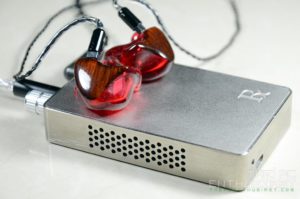
When it comes to sound quality, it’s a neutral sounding amplifier with a very good amount of synergy and dynamics. The music sounds smooth and lovely for me and is never aggressive or harsh. The left and right channels are well-balanced, but you do get a very minor channel imbalance at that very low volume. You won’t be listening at that volume anyway, so no problem at all. The Rx is also very silent, dead silent at least with the set of IEMs I tested it with.
Now remember, this an amplifier specifically redesigned and optimized for IEMs or earphones. You may be able to use it with easy to drive headphones, but it’s not made for that purpose. Also the Rx is amplifier only. It’s not a DAC with amplifier. So if your source doesn’t have a good DAC, you have two options actually. Either you get a good DAC with Amplifier, or get a better DAC and pair it with the Rx. However, the later might be a more expensive solution.
Finally, if you are an IEM guy like me and you have a good DAP, you may find the new Alo Audio Rx to your liking and could be your IEM’s new best friend.

